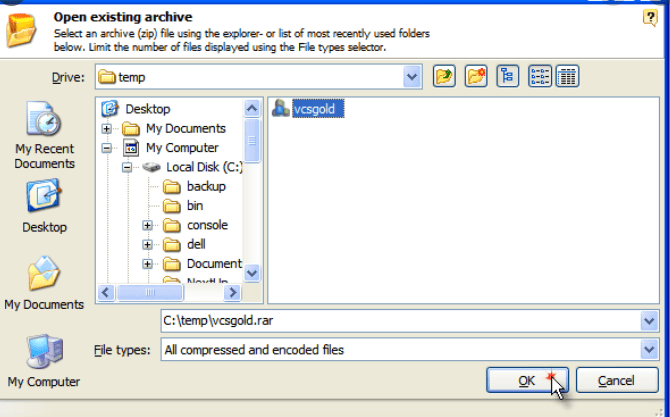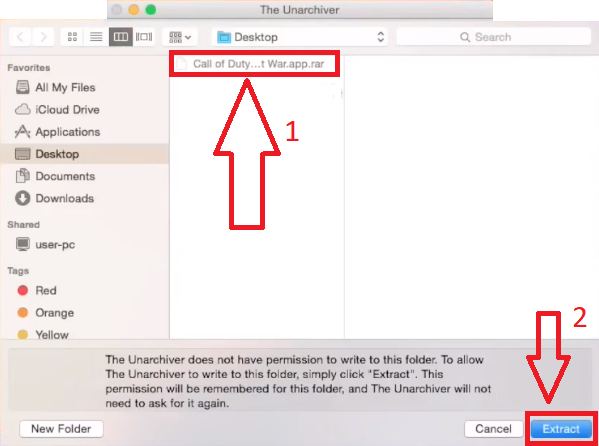
- #Decompress rar for mac how to#
- #Decompress rar for mac mac os#
- #Decompress rar for mac archive#
- #Decompress rar for mac full#
- #Decompress rar for mac rar#
#Decompress rar for mac how to#
If you get errors saying some of the files are corrupt, read the following two articles to determine which files are corrupt and how to potentially fix them.
#Decompress rar for mac full#
You can get a full list of the options for unrar by simply typing unrar into Terminal, and hit the Return/Enter key. Look for the word “ error” and see if any files generated an error. With the Terminal window active (and your extraction results in there) hit Command-F to bring up the Find tool. When you return it is a good idea to search for any errors. You might like to leave unrar doing its thing if there are big archives to be extracted.
#Decompress rar for mac rar#
If you have a folder filed with unrelated RAR files, you could do them in one swipe with this command: cd ~/Documents/extraction_destinationįind ~/Downloads/ -name "*.rar" -exec unrar -pSECRET -y -ad x is used by the Find command, referring to the files just found, and \ end the command when the whole process is done. Just select the name of the first file in the batch, which should be the one with.

So the command for that is the same as shown above. If the batch of files are actually just the parts of a large split RAR file, unrar will automatically go through them all. What about multi-file and batches of archives? The -y command simply tells unrar to answer yes to any yes/no questions that arise during the extraction process.
#Decompress rar for mac archive#
pSECRET is the command -p (indicating what follows is the password) along with THEPASSWORD which should be replaced with the actual archive password. unrar x -p THEPASSWORD -y ~/Downloads/The-archive.rar The x tells unrar to extract the following file into the current directory, whilst maintaining directory structure of the archive contents. Unrar tells unrar (the application) to execute. ~/ is an abbreviation for /Users/YourUsername/ so the full path without that abbreviation would be /Users/YourUsername/Downloads/TheArchive.rar, for instance. Change the path to the correct one for your situation. In Terminal type the following commands cd ~/Downloads/extraction_destinationĬd changes to the directory where you want the file(s) extracted to. Make you have you one trailing space after the command you have typed in, and then drag the file or folder to capture its path. TIP: Rather than typing the path of files and folders into Terminal you can simply drag the file or folder from Finder into Terminal. When you finish the installation keep Terminal open ready for the next step. The instructions there have been updated for OS X up to Yosemite (10.10.x). Implement the steps in this previous article on installing RAR and UNRAR command line tools. However, for those who wish to learn more about what can be done in the command line in Terminal, here are instructions on how to extract RAR archives that way. That last one (StuffIt) is in my opinion bloated and overly expensive. A few names that come to mind are The Unarchiver, The Archive Browser, Archiver, and StuffIt Expander.
#Decompress rar for mac mac os#
Once one of the files got complete, the system will ask for other parts (it didn’t then select the other part manually) for the extraction too.There are plenty of free and commercial tools to extract RAR archives on Mac OS X. Note: If you want to extract a RAR file with multiple parts, ensure that all parts are inside one folder. Make sure you have inserted the correct file and your extraction will begin. Here you will be asked for a password if your RAR file is encrypted. Select the location and click on the Extract button. Then you will need to select the location where you want your RAR file gets extracted. rar file and click on the Extract button. In the drop-down menu, you will find options as:Īccording to the location of your file, select one of the options. Wait for the extraction process to finish.

Select the RAR file you want to open, and click Upload. On the top of your screen, you will find the File option that will open a drop-down menu. Here’s how to open RAR files on a Mac with Unzip Online: Navigate to the Unzip Online uncompress file page, and click Choose File. In Preference under Archive Formats, you will ensure that the RAR Archive check box is checked.

Click on Next to continue the extraction. The moment you run the app, a Welcome window will appear. Open the Launchpad there you will find The Unarchiver application. Log in to your Apple ID then download the app. Note: as you know for downloading any file on any Apple product, you will have Apple ID. Then you will need to select the application by clicking on the Get button beside the first result.

Run your Mac’s App Store and search for ‘The Unarchiver’.


 0 kommentar(er)
0 kommentar(er)
